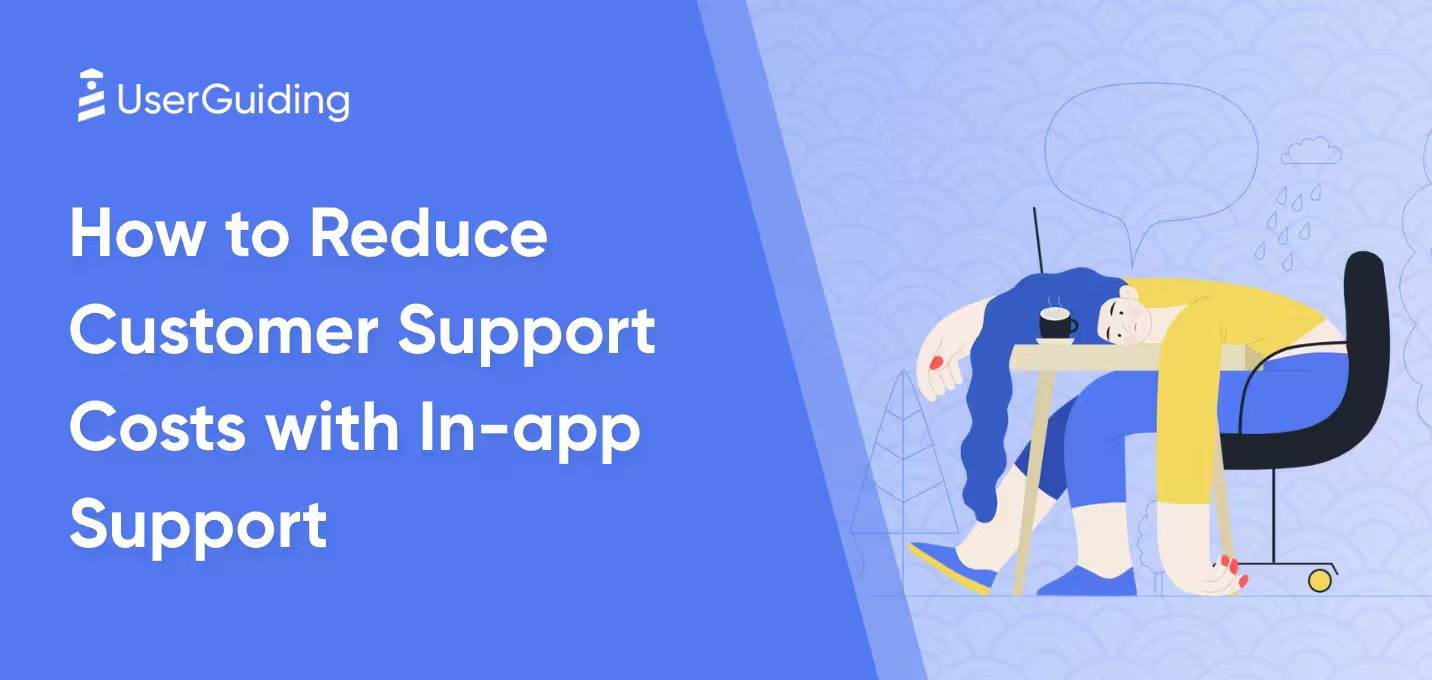

Seeing your patients as people who’ll come and go might be working against you.
You can’t ignore their experience when your competitors are already segmenting patients and personalizing their experiences.
You need to engage them effectively.
And that starts with knowing what you need to measure for the best results.
So, today, let’s take a look at what to measure in healthcare, the most important metrics to track, and what you can do with all that data.
Don’t have the time? Here’s the TL;DR ⬇️
TL;DR
- Track metrics that measure the quality of care, patient satisfaction, and overall patient engagement.
- Focus on essential metrics like Net Promoter Score (NPS), Patient Activation Measure (PAM), and Retention Rate to gauge patient engagement.
- Collect data through patient surveys, Electronic Health Records (EHR), and wearable devices to gather comprehensive patient engagement insights.
- Ensure data privacy and security by complying with regulations, using secure third-party tools, and implementing encryption and access controls.
- Analyze the data using descriptive, predictive, and prescriptive analytics to transform it into actionable insights that improve patient care and engagement.
- Use third-party tools like UserGuiding for higher engagement via in-app surveys and powerful analytics.
What to Measure in Healthcare
Health professionals would know that there are a lot of metrics and KPIs to
- measure the quality of services provided,
- determine compliance with legal processes, and
- keep patients satisfied.
However, a few contribute to overall customer satisfaction when correctly measured and implemented.
Patient-Reported Outcomes (PROs)
Patient-reported outcomes are becoming more and more common as many organizations are putting more effort into patient care. As such, we tend to see an abundance of practices like:
- Patient satisfaction surveys
- Treatment plan adherence
- Health-related quality of life assessment
With the transfer of these procedures to virtual spaces like healthcare portals from paperwork, we can expect more advancements in how they are tracked and what else can be monitored.
Behavioral Metrics
Behavioral metrics are especially crucial for elongated patient relationships and become more relevant during this extended period.
While PROs depend on the input of patients, behavioral metrics look into how frequently and with what intensity patients perform input and behavior expected from them.
There is a long list of behavioral metrics that can be tracked, such as:
- Appointment keeping rates
- Medication adherence
- Engagement with health literacy and education
- Follow-up appointment compliance
And a lot more.
In the long run, these metrics and how successfully you monitor them directly affect resource allocation, patient outcomes, and patient satisfaction with the overall processes.
Technology-Based Metrics
Technology-based metrics are also becoming relevant as we break the barrier between healthcare and technology to elevate experiences and satisfaction.
And in that endeavor, the main metrics to look out for are:
- Website and mobile app usage
- Patient portal utilization
- Social media engagement
You can use these types of metrics to show potential patients why they should prefer your organization, especially using social media engagement metrics.
In the same vein, patient portal usage and website usage can point to existing patients looking for additional services. That, in turn, can help contribute to overall satisfaction using tech.
But what about the actual engagement of patients?
Let’s take a closer look at the specific metrics that can contribute to these KPIs you need to track and consequently increase patient engagement in healthcare.
6 Patient Metrics to Measure Engagement
As we’ve established along the way, healthcare now requires better user experiences with the high inclusion of tech in the industry.
This then results in a need to engage “users,” who are partially the medical staff but vastly, patients.
So, while some of the metrics on our list are essentially well-known user engagement metrics, in this context, we’ll call the patient metrics.
Here’s a look:
1- Net Promoter Score (NPS)
Net Promoter Score is always a great user engagement metric and can easily be used effectively as a patient metric as well.
The principle is simple: You ask your patients, “How likely are you to recommend us to friends and colleagues?” and they score from 1 to 10.
According to their scores, your patients become:
- 0-6 - Detractors
- 7-8 - Passives
- 9-10 - Promoters
How to measure NPS?
While this scale can change from business to business or industry to industry, this is a common one, and the NPS formula looks like this:

With your result, you can tell how satisfied and loyal your patients are.
2- Patient Activation Measure (PAM)
Patient Activation Measure, or PAM is a greatly important metric in healthcare since it is used to assess patients' knowledge, skills, and confidence in managing their health.
While metrics like NPS are relevant from a business perspective, PAM becomes relevant directly in how patients engage with their health and, thus, your services.
How to measure PAM?
PAM is essentially a survey/quiz. Patients need to answer a number of questions, which add up to a score between 0 and 100.
According to how they scored, there are often 4 levels to classify patient activation:
- Level 1: Disengaged in their health.
- Level 2: Struggling with awareness of their health.
- Level 3: Engaged in their health.
- Level 4: Fully engaged in their health and pushing forward.
These levels can help you determine the type of engagement, relationship, and treatment you will have with your patients.
3- Retention Rate
Again, from a business perspective, the retention rate in healthcare shows the percentage of recurring patients who stay with you throughout their treatment.
This is a very effective metric for evaluating the success of your organization in providing good experiences and treatment to your patients.
How to measure retention rate?
When measuring retention rate in healthcare, there is a tiny nuance to look out for. Retention rate is normally measured according to customers at the start and end of a period.
However, according to your business plan, you might want to consider patients whose treatments aren’t finished to focus on patient satisfaction.
If not, you would be considering patients who are simply finished with their treatments as a loss to your business as well.
This is not only unfairly hard on you to manage but also mixes up marketing and sales metrics.
The retention rate formula looks like this:

4- Referral Rate
Referral rate is another metric that directly has to do with your business and how patients engage with it. It gives you the number of new patients referred by existing patients.
And knowing how well you are doing that can help you work on patient satisfaction and enhance engagement.
How to measure referral rate?
Measuring referral rate in healthcare requires a simple formula that looks like:

The result can be analyzed in tandem with your NPS, and you can work on closing a potential gap as a step forward.
5- Time to First Response
The metrics above can be difficult to analyze and improve on. But with the time to first response metric, you can take a close look at yourself in the mirror and actually take meaningful action.
Time to first response, as the name suggests, measures the responsiveness of healthcare providers to patient inquiries.
This is a metric that you would need to track, especially if you’re looking to jumpstart your satisfaction.
How to measure the time to first response?
Time to first response (TTFR) is a fairly simple metric to measure; all it takes is to find the wait for the patient.
If a ticket was created at 9:00 AM and the first response was at 9:06 AM, the TTFR is 6 minutes.

And that information lets you know exactly what you need to be working on or whether your team is already exceeding expectations.
In any case, it reveals data on how you engage with patients.
6- Patient Effort Score
In the same vein as TTFR, which reveals the wait time, the patient effort score reveals the amount of effort a patient makes to solve an issue they are facing.
So the lower, the better.
How to measure patient effort score?
Now, PES is a type of metric that is considerably more objective than most metrics on the list.
It requires a survey with a question like “How much effort did you have to make to resolve your issue?” and often, a 1 to 7 scale works best as there is a neutral option.
The formula after you’ve gathered survey results would look like this:

Remember, the lower your score is, the better. This metric is great for revealing traction in UX and can help patient satisfaction in the long run.
So, you want to use these metrics and put the data to work ASAP.
But there really needs to be a way of streamlining that whole process for exponential success.
Let’s take a look at:
How to Collect and Analyze Patient Engagement Data
Patient engagement metrics all have little nuances and considerations you need to take heed of. A solid process is not a should; it’s a need.
Here's where to start:
1- Collect: Top Data Collection Methods
The first step of our process is data collection: if you don’t know how to collect the data, you cannot start processing it.
And there are some top methods that best suit healthcare patient engagement:
1- Patient Surveys
Notice how most of the patient metrics we’ve mentioned above use surveys?
That’s because healthcare can be an industry that heavily relies on subjective patient feedback, which makes surveys an important asset.
So then how do you go about actually conducting the surveys?
Of course, there are the survey forms necessary for any procedure, before and after treatment. But there are also surveys directed at better patient engagement.
To measure engagement and satisfaction in the short and long term, you can use:
- Post-appointment surveys,
- Periodic health check-ins,
- Feedback forms and more
And if you need a survey that will appear to specific patients when and where you need it, you might want to check out UserGuiding’s in-app surveys feature.

2- Electronic Health Records (EHR)
An EHR system is the backbone of any healthcare organization.
It can be used to track patient interactions, treatment plans, and adherence rates. EHR systems can also be linked with other systems in your organization like secure messaging, appointment reminders, and patient portals.
For maximum efficiency, it is a good practice to integrate EHR data with other sources for a comprehensive view, like wearable devices.
3- Wearable Devices
Though wearable devices seem as though they are only good for medical reporting and monitoring, they can also support better patient engagement and relationships.
You can leverage data from wearable devices to monitor patient behaviors, such as physical activity, medication adherence, and sleep patterns. But that is only the first step.
The data collected can be used to analyze patient profiles and offer better experiences throughout their relationship with your organization.
Thus, wearable devices are easily one of the most invaluable tools for patient engagement.
2- Secure: Data Privacy and Security Considerations
You can’t collect data and call it a day.
Healthcare is among the top industries where data privacy is of utmost importance.
And to truly protect your patients’ data while working on patient engagement, there are certain steps to take.
1- Compliance
Adhering to data privacy regulations, such as HIPAA in the United States and GDPR in Europe, is non-negotiable.
These regulations set the baseline for how your patients’ sensitive data is handled, and a breach can have serious consequences for all parties involved.
So then, what to do?
We make sure to fully comply with the regulations. And that happens by:
- Regularly doing compliance checks in your organization,
- Checking for updates to the regulations frequently,
- Training your staff on data privacy practices
- Using secure technologies with security certifications
Talking about secure technologies…
2- Secure Third-Party Tools
More often than not, healthcare organizations need to use third-party tools and software.
It is not likely that you can build and maintain software for an industry that is in its developing phase when it comes to technology. There is always new technology coming up.
And there is no need to shy away from using third-party software as long as it is secure. It is fundamental to always go with partners that prioritize security.
So, always opt for vendors and partners that offer SOC-certified solutions.
These certifications demonstrate that the provider has undergone thorough evaluations to ensure security practices. For example, at UserGuiding, we have a SOC2 Type2 certification, proving we take security seriously.

Check out our Trust Center to see what you should go for when it comes to security 👈
But don’t stop there. Conduct due diligence by reviewing the security policies of third-party tools to see if they align with your organization's standards for protecting patient data.
3- Encryption and Access Control
Our safety chapter isn’t over yet; we still need to encrypt sensitive data.
Encryption converts sensitive data into a secure format that can only be accessed by authorized individuals.
And in healthcare where security is always a top priority, this is a crucial step.
Implementing strong encryption protocols for data both at rest and in transit ensures that patient information remains protected from unauthorized access.
But there is more to it.
Alongside encryption, strict access controls are also essential. By limiting data access to only the staff who need it for their role, you can reduce the risk of internal breaches.
Multi-factor authentication and regular access reviews further bolster your security posture, ensuring that only the right people have access to sensitive patient data.
3- Analyze: Best Data Analysis Techniques for Healthcare
You’ve collected your patient engagement data, and you’ve secured it.
Now is the time to examine it carefully, which is only possible with the right analysis methods.
You need to first understand the data, then see how it will play a role in the future, and then apply your findings to improve patient engagement. Here’s how it goes:
1- Descriptive Analytics
Descriptive analytics serves as the first step in data analysis, and it is used to make sense of the data at hand.
It involves summarizing and visualizing data to identify patterns, trends, and anomalies within patient engagement metrics.
As data turns into digestible visual formats like charts, graphs, and dashboards, you can begin to understand the current state of patient interactions clearly.
This type of analytics is ideal for setting the base for more complex analysis.
2- Predictive Analytics
Once you have a grasp on the current data through descriptive analytics, the next step is to look ahead using predictive analytics.
This technique leverages historical data to forecast future patient behaviors and outcomes.
For example, by analyzing past appointment adherence, treatment responses, or engagement levels, you can predict which patients are at risk of non-compliance or adverse health events.
This type of analytics is ideal for implementing proactive patient engagement strategies. For example, you can come up with targeted follow-ups or personalized reminders to address problems before they appear.
3- Prescriptive Analytics
The final step in the data analysis process is prescriptive analytics, which goes beyond prediction to recommend specific actions.
This advanced technique uses data-driven insights to optimize decision-making and enhance patient care. In simpler words, it prescribed you with the action to take.
For instance, it can suggest the most effective communication channels for different patient groups or recommend adjustments to care plans based on individual patient data.
By applying these insights, you can improve patient engagement and drive better outcomes and operational efficiency.
This type of analytics is ideal for ensuring that data analysis is not just about understanding what has happened or what might happen but about actively shaping the future of patient care.
Wrapping Up
Now you know what metrics to consider tracking and how you can begin to work toward better patient engagement and relationships.
But remember, engaging your patients isn’t about how many metrics you follow or how good your patient surveys look. It’s about truly caring for their experiences.
As long as you keep that in mind, your patients will come and go with a smile on their faces.
Good luck in advance 🍀

















.svg)
.svg)
.svg)
.svg)
.svg)

.svg)
.svg)












.svg)
.svg)




.png)
















